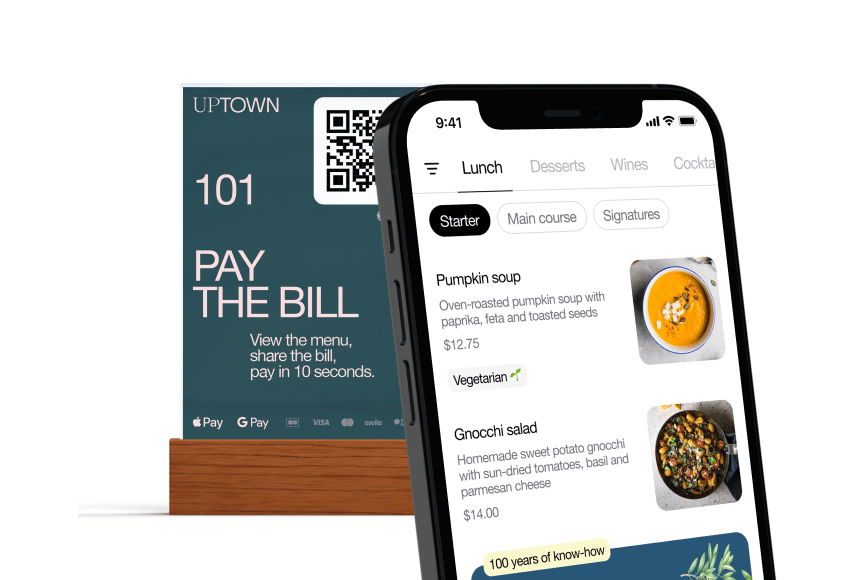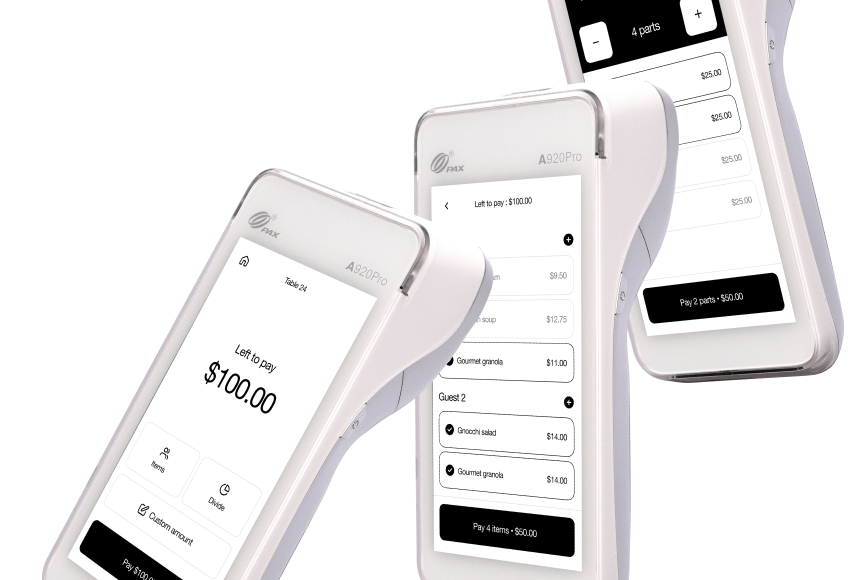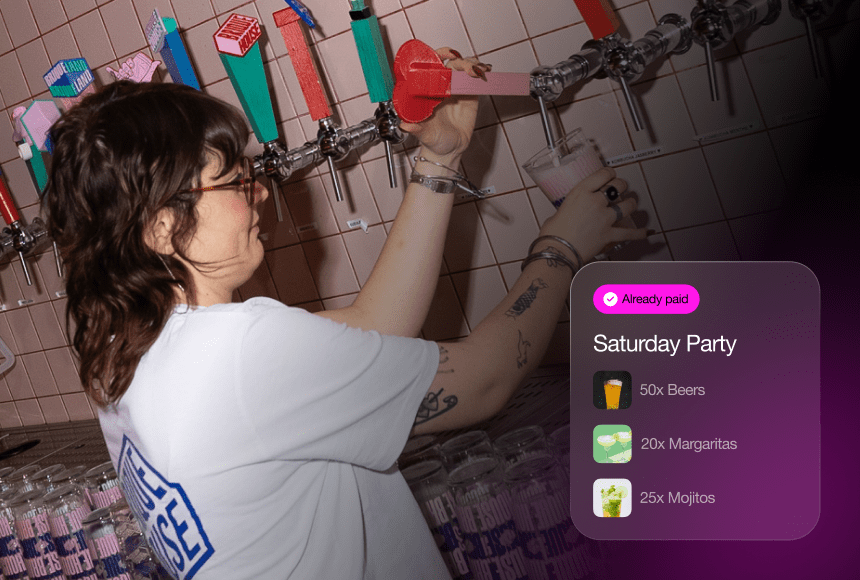
Key Pitfalls That Could Undermine Your Restaurant’s Menu Strategy
Why Menu Design Is Evolving Faster Than Ever
If you think a menu is just a list of dishes with prices, you’re underestimating one of your most powerful sales tools. In 2025, menu design is no longer just about font choices and tempting photos. It’s about guiding the customer journey, reflecting evolving consumer tastes, and integrating with the fast-growing world of digital and contactless payment solutions—like sunday. According to recent research on digital menu trends, over 70% of diners now browse menus online before stepping foot in a restaurant.
Yet, amid this rapid change, it’s surprisingly easy to make seemingly small errors that can undercut sales, confuse guests, or sabotage your image. Let’s dive into the most common mistakes you should steer clear of in your menu design for 2025—and how to fix them.
1. Overcrowding the Menu with Too Many Items
Offering endless choices might sound like a surefire way to please everyone, but in reality, it can overwhelm diners. A confused mind often picks the safest bet—or orders less to avoid making a “wrong” decision.
- Why It’s a Mistake: A chaotic, overly long list prevents your standout dishes from shining. It can also slow down table turnover, as guests spend more time debating options.
- What to Do Instead: Curate your selection. Focus on fewer, well-executed dishes. Group them logically—by protein type, cooking style, or dietary category—so scanning feels intuitive.
Remember, a streamlined menu can be both easier to manage in the kitchen and more profitable overall. You reduce waste and highlight items where you excel.
2. Ignoring the Power of Visual Hierarchy
When diners glance at a menu, their eyes naturally gravitate to certain “sweet spots.” In a physical menu, the top-right corner or center can be prime real estate. In digital menus, the first few items on a scrolling list catch the most attention.
- Why It’s a Mistake: Placing high-margin or specialty items where they’re hard to spot is a missed revenue opportunity. And if your layout lacks clarity—like scattered headings or inconsistent fonts—diners might skip over key dishes.
- What to Do Instead: Plan your layout so your star items—or best profit earners—occupy the spots diners’ eyes land on first. Use consistent headings, spacing, and color cues. If you have a digital menu, ensure your top recommendations appear at the top or highlighted in a separate, easy-to-access list.
One quick trick: if you’re printing menus, try a small highlight box or signature label for your Chef’s Specials, so they pop out visually.
3. Overusing Gimmicky Language or Irrelevant Descriptors
Ever seen a dish called “Delicious Homemade Grandma’s World-Famous Best-Ever Brownies?” Overly dramatic or vague labels can feel inauthentic. While playful names can be fun, too much fluff alienates customers who just want to know what’s in the dish.
- Why It’s a Mistake: Diners are savvy. They want clarity—especially regarding dietary needs, portion sizes, and flavor profiles. Over-the-top language can come across as desperate or even misleading.
- What to Do Instead: Use descriptive but succinct phrasing. Mention key ingredients, cooking methods, or origin if it’s genuinely special. Telling them the chicken is “roasted in aromatic herbs from a local farm” is more trustworthy (and appealing) than calling it “Unbelievably Tasty Chicken Supreme.”
The secret is to highlight what’s actually unique or premium without resorting to hyperbole that customers doubt.
4. Neglecting the Digital and Online Viewing Experience
In 2025, your menu likely lives beyond the confines of paper. Guests check it out on your website, on social media, or through an online ordering platform. If your digital presence is inconsistent, glitchy, or incomplete, you’re missing out.
- Why It’s a Mistake: A diner might fall in love with your digital menu and plan to order the vegan risotto—only to discover it’s not available in-person or the online info was outdated. Inconsistencies breed frustration and lost sales.
- What to Do Instead: Keep an updated master document. Whenever you tweak a dish or price, revise your website and any third-party listings at the same time. Use high-quality images sparingly but effectively, and ensure the design is mobile-friendly. That means easy scrolling, clickable sections, and no big PDFs that are impossible to read on a phone.
Also, consider how tech like sunday simplifies the overall guest experience—instantly letting diners pay via QR code or browse a dynamic digital menu, ensuring everything’s always up to date.
5. Pricing Dishes Without Strategy
If your $30 steak appears next to a $15 chicken entrée, diners might think the steak is overpriced, or the chicken is a steal. Pricing is psychological as well as financial.
- Why It’s a Mistake: Arbitrarily assigning prices can leave you exposed—some items might have too slim margins, while others discourage customers from buying altogether.
- What to Do Instead: Implement “anchor pricing.” Place a higher-priced (but still value-driven) dish near your mid-tier items. This can make the mid-tier choices feel more affordable. Also, consider removing currency signs or decimal points to reduce the mental “sticker shock” effect—like writing 28 instead of \$28. Depending on your restaurant’s style, test which approach resonates best with your clientele.
Always keep an eye on margin and competitor pricing. You want diners to feel they’re getting a fair (if slightly premium) deal—especially if you’re serving top-quality produce or distinctive recipes.
6. Designing for Ego Instead of Readability
A designer might propose a gorgeous script font or intricate background patterns that look stunning in a portfolio. But in low restaurant lighting, or on a phone screen, that beauty can become a burden.
- Why It’s a Mistake: If a diner has to squint or tilt the menu under the table lamp, they’ll quickly tire. Confusion leads to fewer orders and a negative impression.
- What to Do Instead: Choose readable fonts in appropriate sizes—especially for headings, prices, and item descriptions. If you want a unique flourish, keep it minimal, like an accent color or a small illustrative border. Test print your menu in actual restaurant lighting to ensure it’s user-friendly.
A visually pleasing design is great—but readability is paramount. Let the visuals enhance, not overshadow, the dining decisions.
7. Missing Opportunities for Upselling and Pairing
Sure, your staff might occasionally pitch an appetizer or dessert, but if your menu itself doesn’t nudge diners, you’re leaving money on the table. A structured approach can systematically boost average checks.
- Why It’s a Mistake: People don’t always notice add-ons unless you guide them. Without a subtle push, they might skip that side dish or special drink entirely.
- What to Do Instead: Consider adding short pairing notes. “Pairs well with our signature craft beer” or “Try our house-made garlic bread” can spark curiosity. For combo deals or set menus, keep them front-and-center. And if you’re using a digital menu, highlight relevant suggestions automatically—like a mild dessert after a spicy entrée.
These small prompts can significantly increase your ticket size without feeling heavy-handed.
8. Failing to Adapt to Dietary Trends and Preferences
It’s 2025—vegetarian, vegan, gluten-free, and other dietary preferences are more widespread than ever. If your menu doesn’t reflect these changing tastes, you risk appearing out of touch.
- Why It’s a Mistake: Ignoring or hiding dietary-friendly dishes can alienate entire demographic groups, who may just move on to more accommodating restaurants.
- What to Do Instead: Clearly mark vegan, vegetarian, gluten-free, or other relevant categories with unobtrusive icons or short notes. Offer at least one hearty option in each dietary category—nobody wants a bland afterthought meal. And consider highlighting local or sustainable items to appeal to eco-minded guests as well.
Staying updated on these trends means your menu resonates with evolving consumer priorities and ensures no one feels overlooked.
9. Not Keeping the Menu Dynamic and Current
Menus shouldn’t be static. Basing them solely on your initial launch and never revisiting is a missed chance to reflect what’s actually selling—or what new ideas your chef wants to try.
- Why It’s a Mistake: Dishes that were popular last year might lose steam. Ingredients fluctuate in cost. If you never update, your margins can shrink, or your menu can look stale.
- What to Do Instead: Aim for a seasonal refresh or monthly limited-time specials. Track sales data closely and remove consistently underperforming items. Highlight new additions so they don’t blend into the background. And be ready to pivot if you spot a new culinary trend taking off.
Frequent mini-updates also keep regulars intrigued, giving them fresh reasons to return to discover new flavors.
10. Overlooking User Testing and Feedback
You might think your new menu layout is genius. But have you shown it to actual customers? The real-world feedback can be enlightening—if not a bit humbling.
- Why It’s a Mistake: Designing in a vacuum can lead to confusion. Customers might find the font too small, the sections mislabeled, or the descriptors too vague.
- What to Do Instead: Print a few samples or create a digital preview. Have friends, family, or loyal patrons do a quick read. Ask them, “Which dish catches your eye first? Any confusion over the categories?” Tweak accordingly. And once you roll it out, keep an ear open for in-restaurant comments or online reviews referencing the menu’s clarity.
A small test phase can ward off big headaches later. And if you’re introducing a digital version, run it on various phones or tablets to guarantee it looks polished across devices.
Elevating the Guest Experience Through Thoughtful Menu Design
Menu design might not get the same hype as a new interior renovation or a fresh social media campaign, but it’s a hidden gem of restaurant strategy. By dodging these common pitfalls—like cluttered item lists, confusing layout, and unbalanced pricing—you’re not just boosting your sales. You’re making the dining experience more intuitive and enjoyable for your customers.
Remember, in 2025 (and beyond), guests are savvier. They research menus online, look for clarity on dietary options, and appreciate easy payment and ordering flows. Tools like sunday fit right in here, letting you keep a dynamic, up-to-date digital menu and simplifying how people settle their bill. That fluid synergy—between well-structured offerings and an effortless checkout—can become a key differentiator, especially in a crowded dining market.
With a bit of planning, creativity, and willingness to adapt, you can dodge these frequent menu design mistakes. The payoff is a smoother, more profitable operation, satisfied diners who find the perfect dish easily, and a reputation for staying current with the latest trends and technologies. So, take a fresh look at that menu. Polishing up your approach now sets you up to thrive in 2025 and whatever comes next in the dynamic world of hospitality.
Find out more today
Drop us your details below and we’ll reach out within the next 24h
Make your menu work for you too.
With digital menus, you can manage different areas, times, menu types, add-ons, pictures, languages, allergen info and much more.



